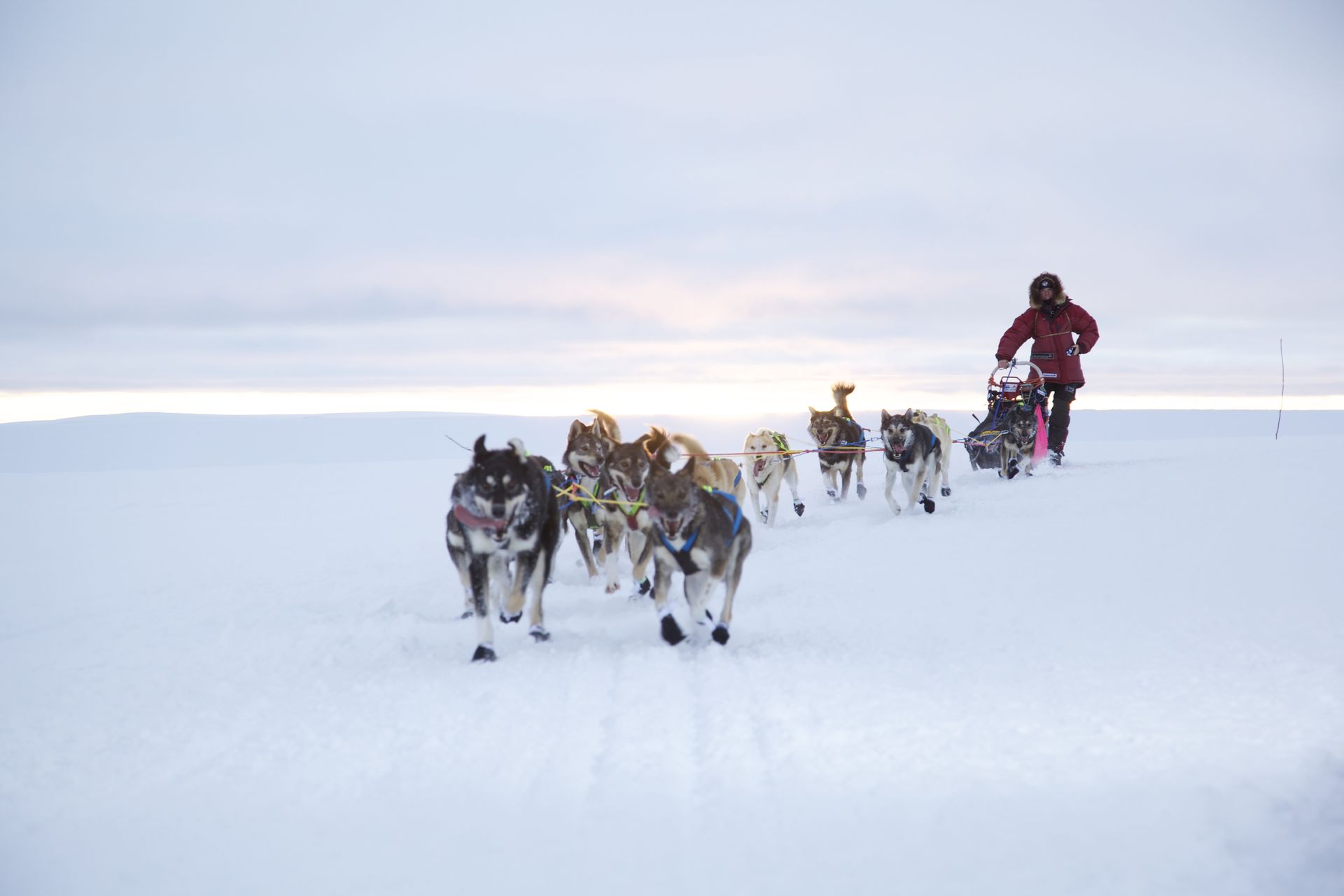The Finnmarksløpet sled dog race takes place every year the week of March. That’s when around 150 sled dog teams will be competing, with about half going the full 1,200 kilometres (745 miles) and the rest 500 kilometres (311 miles). The race starts in Alta, crosses Finnmark to Kirkenes and ends back in Alta. It is Europe’s longest, and the world’s northernmost, sled dog race.
The Finnmark Race never stops
There are no stages in the Finnmarksløpet race – it goes without stopping from start to finish. While there are of course obligatory rest breaks, they take place when the teams reach designated checkpoints. So there’s always someone who’s driving. The winner takes around five days and 10 hours to complete the race in good weather conditions, while the last teams cross the finishing line after seven days.
Finnmarksløpet happens in the best time of winter
The second week in March is a good week for being outdoors in Finnmark; the weather is stable and temperatures are starting to rise once more. The coldest temperature on record during the race is minus 44 degrees Celsius, but day-time temperatures are usually a few, comfortable minus degrees. Night temperatures can of course go lower. Snowstorms may also occur, but are fairly rare so late in the winter. The Finnmark terrain is as though made for sled dog racing, with gentle slopes, flat plateaus and forest-clad valleys, which allows the dogs to get up plenty of speed.
A dog burns 10.000 calories a day
The Alaska husky is a dog with very special characteristics; there is no other dog in the world capable of transporting people quickly over long distances. A 25kg (55lb) husky needs up to 10,000 calories a day, while a man needs around 2,500. The 500km race is run with teams of eight dogs each, while the 1,000km race uses teams of 14 dogs.
Happy dogs
No-one runs a marathon without wanting to. The same is true of Alaska huskies. They are mentally driven to pull; the reins that bind them to the harness are always tight and tense. If the reins are slack, the musher knows that something’s wrong. Then the dog gets to sit on the sled under a blanket until the next checkpoint. A total of 11 veterinarians carry out health checks on the dogs throughout the race, and retire any which should not run any further. If too few dogs are left, the team has to withdraw. There is rarely disagreement between the veterinarians and the mushers, for the mushers keep a close eye on how their four-legged friends are faring.
Many nations participate
Mushers come from many different nations. The vast majority come from the Nordic countries, where interest in this sport is high. Other European countries also participate with some teams. Mushers have often chosen to live a dog life entirely voluntarily, with feeding, training, and lots of cuddling with the dogs. Only the very best manage to earn some money from this, so this is definitely driven by passion rather than profit. Many are also involved in the tourist industry and see this as their annual vacation.”
Just watching it is great fun
It’s not just at the start and finish lines in Alta that people rally around the race. Along the entire route, local residents stand and cheer the mushers on. Half of Finnmark is, in other words, on their feet. Dog sledding is more spectator-friendly than, for example, a cycling race, where the whole field passes by in just a few minutes. In the Finnmarksløpet, the field spreads out over several hours, and it all takes place at a human pace.
Along the trail, it’s a public celebration
In small and large communities along the trail, the Finnmarksløpet is an event. Of course, people cheer on the dogs as they head towards the checkpoints. In many places, concerts are held, ranging from traditional Sami joiggus to modern rap. Winter markets with piping hot bidos and cozy gatherings around the bonfire with campfire coffee are also part of the experience.
Make your Finnmark vacation coincide with the Finnmarksløpet.
The second week of March is a great time to experience winter in Finnmark. Just before the spring equinox, the northern lights activity is at its peak, the weather is stable and nice, and the daytime temperatures surprisingly mild. This means you can spend a long time outdoors, both as a spectator at the race, as a participant in cultural events and winter markets, and in your own activities. You can also go dog sledding yourself, with short and long tours offered in many places. Snowmobile tours are also popular, and in East Finnmark, you can go king crab fishing.
Watch the Finnmark race
Go to the official page for more information















